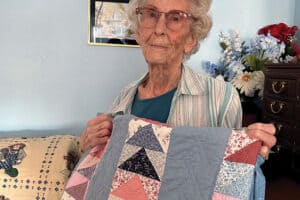It began with a favor for a friend.That friend was moving and asked Stephanie Gagnepain if she would take her three chickens.Gagnepain had never had chickens before, but said sure. She adopted them, and built an enclosure for them.”I thought, wow, this is really fun,” she said. “So I got more chickens. And more chickens. And more chickens.”She is not sure how many chickens she has exactly these days. “I quit counting, but itís over 100.”Just as the chicken population has grown, so has her village of coops. She now has 17, all with individual names and all largely built by her, with unique styles that reflect her background as an artist; she has a degree in fine arts from Valparaiso University in Indiana. One of the coops is an Earthship-type structure with walls made from tires, mimicking the unique, zero-energy home that she and her husband, Jim, built on the plains in eastern El Paso County with walls made from tire bales.Her flock of chickens grew randomly at first. “In the beginning, I had to have one of every kind of chicken,” Gagnepain said.ìFinally, Jim put his foot down and said, ‘You have got to keep only chickens that youíre going to breed.'” That took her on a path to discover her true passion:”breeding ultra-rare chickens to keep them from being extinct.îShe settled on these breeds: Siberian Pavlovskaya, Swedish Flower, Swedish Hedemora and Shamo, including an especially large variety known as O-Shamo.”The Shamo are from Japan, so I have a special place in my heart for them,” Gagnepain said. That’s because she was born in Japan, the daughter of missionaries. The Shamo is one of several chicken breeds that have been declared as “national treasures” by the Japanese government.The O-Shamo were originally bred to be cockfighters, Gagnepain said. “They are actually very sweet chickens. Just like pit bulls, if you don’t train them to fight, they won’t fight.”The Shamo is more of a warm-weather breed; in the U.S., you’ll find them mostly in the South. But Gagnepain’s other breeds, coming from such places as Siberia and Sweden, are cold-hardy and “great for Colorado,” she said.Gagnepain has developed a business selling fertilized eggs over the internet. Farmers, for the most part, are simply interested in production, not rare breeds, so she sells mostly to chicken fanciers like herself.Raising all those chickens isn’t easy. In addition to tending to the birds outside, she has chicks in cages and eggs in incubators to keep an eye on inside.Deadly visitors pose a challenge outside.”We had to put up a fence because of the coyotes; they would come in and get a chicken daily,” Gagnepain said. Rattlesnakes also pose a threat, so she got guinea fowl, which are known to kill or at least deter snakes. The guinea fowl also help chase off a threat from the sky: prairie falcons, which can swoop down and gut a chicken in an instant.Gagnepain also has a few turkeys that help scare off predators; she tried having ducks, too, but they were ìtoo messy.” She also raises guinea pigs; she originally got them as company for baby chickens; the chicks would snuggle with the guinea pigs at night to keep warm. She now usually keeps the chickens and guinea pigs separate, but the chickens still visit the guinea pig coops “and just watch them like they’re at the zoo.”That is an example, she said, of how surprisingly curious and intelligent she has found chickens to be. So the many unique features on the property ñ- a “petrified forest” made out of concrete, colored glass pebbles on the ground, chicken-sized swing sets ñ- are all meant to provide mental stimulation to the birds.”I never thought chickens really wanted a relationship with people,” she said. “I know tropical birds are very social, but I didnít know how intelligent chickens are. They sit in my lap and talk to me, and I find that fascinating. Since my kids are in their 30s and are not married and donít want children, I figure, well, these are my grandkids.”
 |  |
| Stephanie Gagnepain holds a young Swedish Flower chick ó part of her chicken ranch. | The Shamo breed of chicken has been declared a national treasure by the Japanese government. |
 |  |
| Stephanie Gagnepain built a variety of coops for her plethora of chickens. | Stephanie Gagnepain has created many features to mentally stimulate her chickens, such as this “petrified forest.” |






